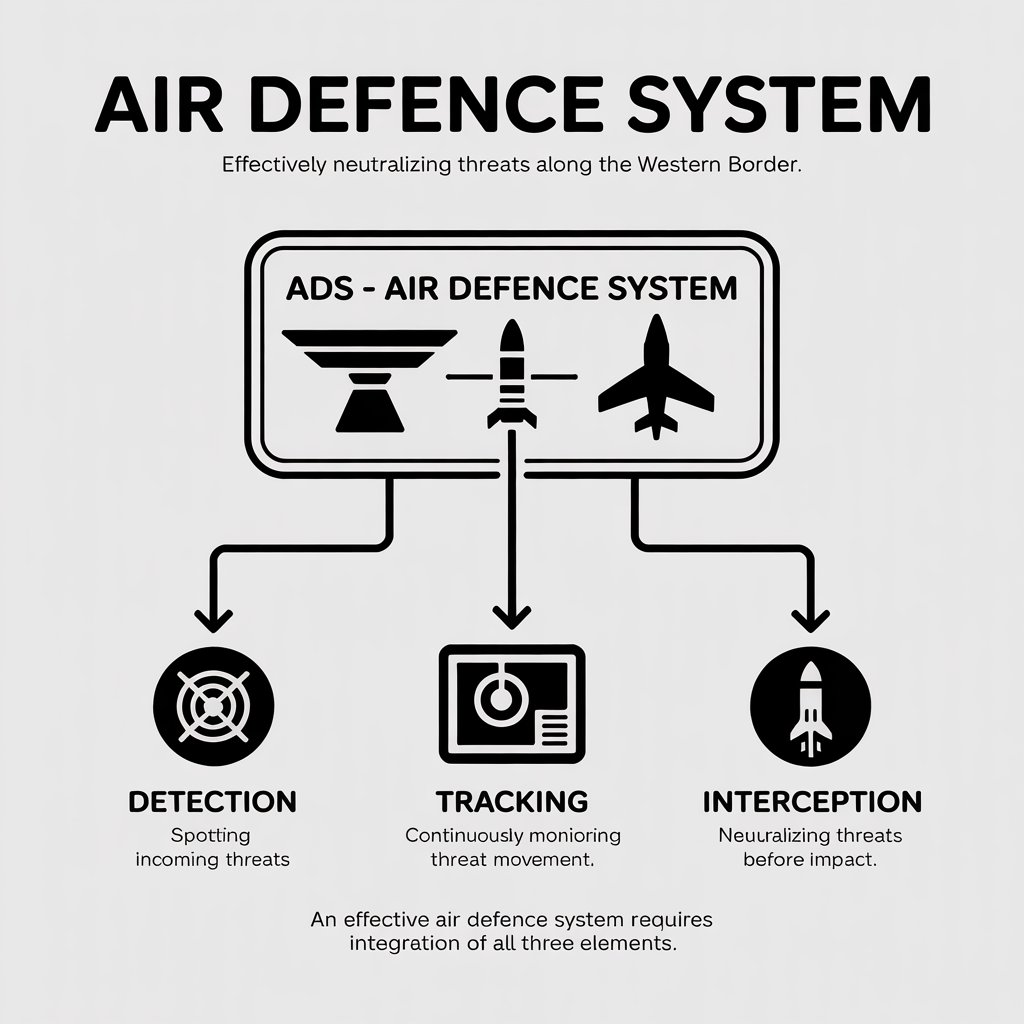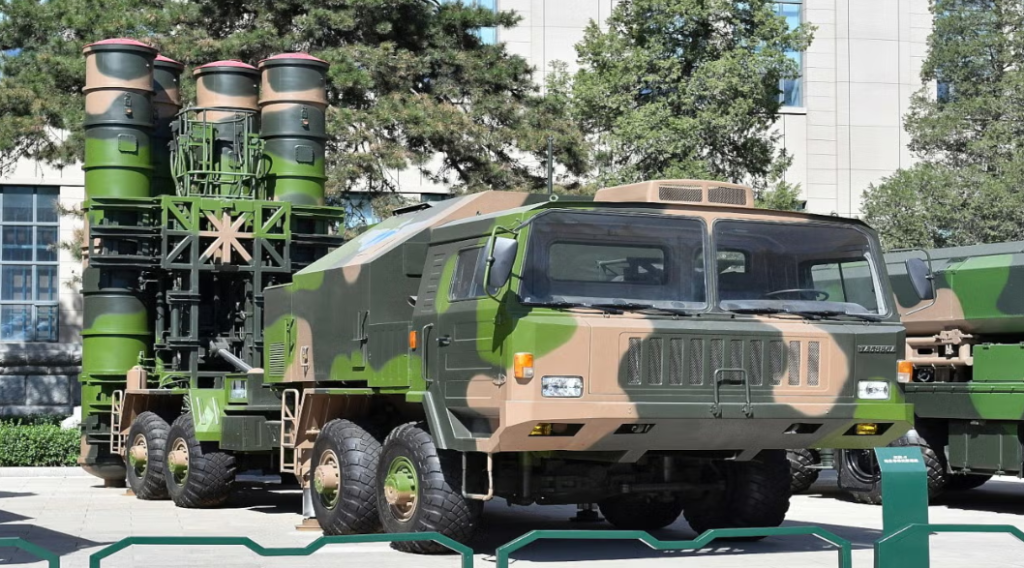With today’s rapidly changing security environment, air defense systems are at the forefront of protecting a nation’s airspace from dangerous adversaries. These technologically advanced systems feature state-of-the-art radar, missile, and networking technologies capable of detecting, intercepting, and destroying enemy aircraft, drones, and ballistic missiles. In this article, we present the Top 10 Air Defence Systems in the World in 2025, exploring their capabilities, features, and strategic significance🔗.
Why Air Defence Systems Matter in 2025
With the rise of hypersonic missiles, UAV swarms, and ballistic threats, countries are investing heavily in advanced air defence technology. Effective systems protect national airspace and critical infrastructure, enhancing security by rapidly detecting and neutralizing threats.
Key Reasons Air Defence Systems Matter:
- Protection against aerial attacks
- Deterrence and Strategic Balance
- Protection of Critical Infrastructure
- Support for Offensive Operations
- National Security and Sovereignty
- Technological Edge and Adaptation

Best Air Defence Systems In The World
The Russian S-400 is widely regarded as one of the most advanced long-range air defence systems, known for its extensive range and ability to engage various aerial threats. Its effectiveness was proven during recent conflicts, such as the India-Pakistan clashes, where it successfully intercepted missiles and drones. The S-400 has also demonstrated its capabilities in the Russia-Ukraine conflict, where it reportedly intercepted several missiles supplied to Ukraine by NATO countries🔗.
However, the “best” air defence system depends on specific needs and a layered defence approach. Combining short, mid, and long-range systems with advanced radar and command networks offers the most reliable protection. Recent conflicts have highlighted how integrating the S-400 with other systems enhances overall airspace security🔗.
Top 10 Air Defence Systems In The World
1. S-400 Triumph (Russia)

- Country of Origin: Russia
- Max Range: 400 km (with 40N6E missile)
- Max Altitude: 56 km
- Interceptor Speed: Up to 4.8 km/s (17,000 km/h, Mach 14)
Key Features/Notes:
- Engages aircraft, drones, cruise and ballistic missiles
- Can track 300 targets and engage 36 simultaneously
- Highly mobile; rapid deployment (5–10 min)
- Advanced radar and electronic warfare resistance
- Supports multiple missile types for layered defence
Deployed: Russia, China, India, Turkey, Belarus, and others
2. THAAD (Terminal High Altitude Area Defense)

- Country of Origin: United States
- Max Range: 200 km
- Max Altitude: 150 km
- Interceptor Speed: 2,800 m/s (10,000 km/h, Mach 8+)
Key Features/Notes:
- Mobile, anti-ballistic missile system
- Hit-to-kill kinetic interception (no explosive warhead)
- Can intercept missiles inside and outside the atmosphere
- Advanced X-band radar (AN/TPY-2)
- Integrates with Patriot and Aegis systems for layered defense
Deployed: United States, South Korea, United Arab Emirates, Israel, Saudi Arabia
3. David’s Sling

- Country of Origin: Israel & United States
- Max Range: 40–300 km
- Max Altitude: Up to 15 km (potentially higher against some ballistic threats)
- Interceptor Speed: Mach 7.5
Key Features/Notes:
- Stunner missile with hit-to-kill mechanism
- Multi-pulse propulsion for high speed and maneuverability
- Advanced AESA radar and dual EO/IR seeker
- Designed for aircraft, drones, cruise and ballistic missiles
- Integral part of Israel’s layered air defence
Deployed: Israel (since 2017), also acquired by Germany and Finland
4. Patriot PAC-3

- Country of Origin: United States
- Max Range: Up to 160 km (aircraft); 35-70 km (ballistic/cruise missiles, depending on variant)
- Max Altitude: Up to 24 km
- Interceptor Speed: Mach 5 (~6,173 km/h)
Key Features/Notes:
- Hit-to-kill technology (kinetic impact)
- Active radar homing seeker
- Highly agile, effective against tactical ballistic missiles, cruise missiles, and aircraft
- Can be integrated with other air defence systems
Deployed: USA, Germany, Israel, Japan, Kuwait, Netherlands, Poland, Qatar, Romania, South Korea, Sweden, Ukraine, UAE, others
5. S-300VM/Antey-2500

- Country of Origin: Russia
- Max Range: 200 km (aerodynamic targets), up to 40 km (ballistic targets)
- Max Altitude: 30 km
- Interceptor Speed: Up to 4.5 km/s (16,200 km/h, Mach 13)
Key Features/Notes:
- Designed to intercept ballistic missiles, aircraft, and cruise missiles
- Can engage up to 24 targets and guide 48 missiles simultaneously
- High mobility, autonomous operation, and strong ECM immunity
- Advanced radar and command systems, vertical launch capability
Deployed: Russia, Egypt, Venezuela
6. Aster 30 SAMP/T

- Country of Origin: France/Italy
- Max Range: 120–150 km (Block 1NT)
- Max Altitude: 20–25 km
- Interceptor Speed: Mach 4.5 (1,400 m/s)
Key Features/Notes:
- Mobile, theatre-level defence
- Effective against aircraft, cruise missiles, and short-range ballistic missiles
- Advanced AESA radar and rapid deployment
- Blast-fragmentation warhead for broad target set
Deployed: France, Italy, Singapore, Ukraine
7. HQ-9

- Country of Origin: China
- Max Range: 200 km (HQ-9), up to 300 km (HQ-9B variant)
- Max Altitude: 30 km (HQ-9), up to 50 km (HQ-9B)
- Interceptor Speed: Mach 4.2
Key Features/Notes:
- Two-stage, long-range surface-to-air missile system
- Can engage aircraft, cruise missiles, air-to-surface missiles, UAVs, and tactical ballistic missiles
- Based on Russian S-300 and influenced by US Patriot technology
- Advanced radar and multi-target capability; can track 100 targets and engage over 50 simultaneously
- Variants include HQ-9B (extended range), naval (HHQ-9), and export versions
Deployed: China (PLA Air Force, PLA Navy), Pakistan (HQ-9/P, HQ-9B), Egypt, Morocco, Turkmenistan, Used in disputed regions (e.g., South China Sea, near India border)
8. MEADS (Medium Extended Air Defense System)

- Country of Origin: USA, Germany, Italy
- Max Range: ~100 km (PAC-3 MSE missile)
- Max Altitude: ~20 km
- Interceptor Speed: Mach 8.2 (≈2.8 km/s)
Key Features/Notes:
- 360° coverage with advanced AESA radars
- Uses hit-to-kill PAC-3 MSE missiles
- Highly mobile and air-transportable (C-130/A400M)
- “Plug-and-fight” open architecture for easy integration
- Designed for rapid deployment and protection of maneuver forces
Deployed: Not yet fully operational; selected for future deployment by Germany (TLVS program), considered by several NATO countries
9. Barak-8

- Country of Origin: India & Israel (joint development)
- Max Range: 70–100 km (standard), up to 150 km (Barak-8ER variant)
- Max Altitude: 20 km
- Interceptor Speed: Mach 2+ (standard), Mach 3+ (MR-SAM variant)
Key Features/Notes:
- Active radar seeker, dual-pulse rocket motor, thrust vector control
- 360-degree coverage, vertical launch, two-way data link
- Capable of engaging aircraft, UAVs, cruise missiles, anti-ship missiles, and ballistic missiles
- Multiple simultaneous engagements, high maneuverability, smokeless propulsion
Deployed: Indian Navy, Indian Air Force, Indian Army, Israeli Navy, and several export customers
10. Iron Dome

- Country of Origin: Israel
- Max Range: 70 km
- Max Altitude: 10–20 km
- Interceptor Speed: Mach 2.2
Key Features/Notes:
- Intercepts short-range rockets, artillery shells, and mortars
- Uses Tamir interceptor missiles with high maneuverability
- Operates in all weather, day/night
- Can engage multiple threats simultaneously
- Success rate over 90%
- Mobile, can protect urban areas up to 150 sq km
Deployed: Since 2011, primarily by Israel; also used by the US
Which is the Powerful Indian Air Defence System?
India’s air defence is anchored by the Russian-made S-400 Triumf, one of the world’s most powerful systems. It can detect and destroy aircraft, ballistic missiles, and drones up to 400 km away, using four types of missiles for layered defence. Integrated with India’s Air Command and Control System, the S-400 ensures fast, coordinated responses. It proved its effectiveness during Operation Sindoor in 2025 by intercepting Pakistani threats.
Alongside the S-400, India uses the indigenous Barak-8 missile system, developed with Israel, which protects critical bases and naval assets up to 100 km. Together with other systems like Akash and Akashteer, these form a strong, multi-layered air defence network safeguarding India’s skies.
Conclusion
Air defence systems are crucial for national security in today’s world of advanced aerial threats. The top systems-like the S-400, THAAD, and Iron Dome-showcase cutting-edge technology and proven effectiveness against a wide range of dangers, from aircraft to missiles and drones. However, no single system can provide complete protection. The best results come from a layered approach, combining multiple systems and advanced radar networks. As threats continue to evolve, investing in integrated, multi-layered air defence will remain essential for protecting airspace and critical infrastructure worldwide.




